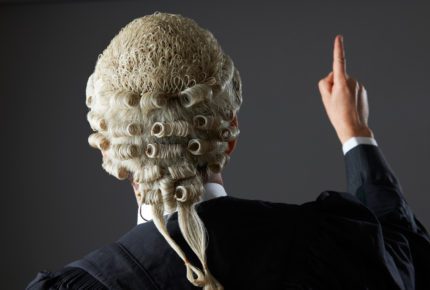

Actual bodily harm (ABH) is one of the most common offences relating to violence. It is set out in a very old statute dating back to 1861, which uses antiquated language. So, if you are struggling to understand what is written on your charge sheet, this could be why. This article aims to demystify the offence of actual bodily harm. We provide a definition of ABH and look at the difference between ABH and the more serious offence of grievous bodily harm (GBH). We then consider the sentencing guidelines for ABH and some examples of the types of incidents that may lead to this charge being brought. Finally, we consider the defences that you may be able to rely upon.
What is the definition of actual bodily harm?
Assault occasioning actual bodily harm (ABH) is set out at s47 of the Offences Against the Person Act 1861, which states:
‘Whosoever shall be convicted upon an indictment of any assault occasioning actual bodily harm shall be liable . . . to be kept in penal servitude’
Essentially, this means that conviction for the offence could result in a prison sentence. The Act does not provide a definition of ‘assault’ nor does it provide details of the level of injury that would be required in order for the courts to find that an assault had caused ABH. These are matters that have been interpreted over the years by the courts.
For the purposes of ABH, an assault is an act that causes a person to suffer unlawful violence. Bodily harm has its ordinary meaning. It includes any act that causes discomfort or harm to a person’s health. The harm does not need to be serious or long-term; these more serious types of assaults would be more likely to be prosecuted as GBH. Sometimes ABH is also referred to on the charge sheet as ‘battery’.
In order to be convicted of ABH, the jury must find that either you intended to assault the victim, or that you recklessly assaulted them (i.e., that you didn’t really care whether they suffered injury as a result of your actions).
What is the difference between actual bodily harm and grievous bodily harm?
There are three key differences between ABH and GBH. Firstly, for ABH, the harm caused could be temporary, or mild, whereas for GBH, the harm must be really serious.
Secondly, the mental intention required for ABH is the intention to assault, or recklessness to assault. By contrast, the required mental intention for a person accused of GBH is the intention or foresight of some harm caused by the assault. Therefore the mental intention test for GBH is a higher test to prove than ABH.
Thirdly, GBH is an indictable only offence, which means that it can only be heard in the Crown Court. By contrast, ABH is an either way offence, which means that the defendant can elect whether the case is heard in the Magistrates Court or the Crown Court.
What are the actual bodily harm sentencing guidelines?
For ABH, a defendant will receive, at a minimum, a high level community order, or at a maximum, a five year custodial sentence.
When determining the sentence for ABH, the court will assess the level of harm caused to the victim and the culpability (blameworthiness) of the defendant.
Factors that suggest greater harm include psychological harm caused to the victim and the particular vulnerability of a victim. For example, a person with a pre-existing disability. Factors that indicate greater blameworthiness include pre-meditation, an act that was motivated by hostility towards a protected characteristic such as race, religion, or sexual orientation, and/or the use of a weapon.
Read the Sentencing Guidelines for ABH here.
Are there any defences to actual bodily harm?
Lawful Sport: If the injury took place during a lawful sporting activity, such a rugby match, you may be able to rely upon this defence. It does not apply if you maliciously intended to cause the injury. If the court finds that you acted aggressively and dangerously in a way which went beyond the usual risks of the sport, the defence may not be successful.
Consent: In some circumstances, you may be able to defend a charge of ABH on the grounds that the victim consented to the activity. This has been used by defendants charged in relation to harm caused by sadomasochistic sexual activities. However, there is legal debate in relation to the extent to which consent should be allowed to be a defence in these circumstances. If you believe that this offence could apply to you, you should seek specialist legal advice on the facts of your case.
General defences
In some circumstances, you may be able to rely upon what is called a ‘general defence’ to ABH. General defences relate to the person accused rather than the crime itself. General defences include:
Self-defence: The law says that if you are attacked, you may use the force that is reasonably necessary to defend yourself. You may also use reasonable force to defend another person or property.
Use of force in prevention of crime: You are permitted to use reasonable force to prevent a crime from taking place or in order to assist in a lawful arrest. For example, if you injured a person in an attempt to prevent them from assaulting someone else.
Intoxication: The courts are reluctant to accept voluntary intoxication (choosing to consume drugs and alcohol) as an excuse for criminal behaviour. Whilst intoxication may mean that you could not have formed the intention to harm, it will not generally be accepted as a defence to recklessness. If you were drugged by someone else can ended up injuring someone, you might be able to rely on the intoxication defence.
Automatism: If you were not aware of your actions when committing the offence, in some rare circumstances, you may be able to rely upon the defence of automatism. Generally, if you were under the voluntary influence of alcohol or illicit drugs you will not be able to rely on this defence.
Duress/necessity: This is where you were forced by a person or a set of circumstances to commit an offence. For example, if a gang member told another gang member to kick the victim, or else she would be killed. The court would consider whether the defendant reasonably feared death or serious injury if she did not commit the act, and whether a reasonable person in her situation would have shared those fears and responded in the same way.
Insanity: If the court finds that due to mental illness, you lacked the ability to reason such that you did not know that the act that you were doing was against the law, you may be acquitted on the grounds of insanity.
Mistake: This defence could apply if you were mistaken as to certain factual circumstances and would not have committed the offence if you had known otherwise. For example, perhaps you believed that the victim had stolen from a shop, and you attempted to conduct a citizen’s arrest, in the course of which the victim suffered minor injuries. It subsequently transpired that the victim was innocent of any crime. The court will consider whether your belief was honest but mistaken, and if it was reasonable in the circumstances. You cannot rely on your mistaken understanding of the law as a defence, though this could lead to you receiving a lesser sentence.
Defences are a complex area of the law and you should consult a solicitor for advice on the facts of your case.
What are some actual bodily harm examples?
- The defendant punches the victim in the arm in a bar brawl, resulting in visible bruising to the victim.
- The defendant scratches the victim during a domestic incident, resulting in minor cuts to their face.
- Whilst running down the street to avoid arrest, the defendant roughly pushes an elderly person out of the way, recklessly, but without intending to harm them. The person falls and suffers from psychological shock and bruising.
- The defendant performs an aggressive and illegal tackle during rugby, causing bruising and shock to the victim. The court finds that the defence of lawful sport does not apply, because the defendant acted recklessly and dangerously.
- During a sado-masochistic sexual act, the defendant whips the victim causing minor lacerations and bruising to their back. The defendant alleges that the victim consented to the activity, however the court does not accept the defendant’s defence, finding that the injuries went beyond that which the victim could have reasonably consented to.
- A nightclub bouncer pushes an inebriated patron aggressively against the wall, they bang their head, resulting in bruising.
How can I get help with Actual Bodily Harm Offences?
Have you been accused of actual bodily harm? If so, don’t delay in finding the right legal advice. Stuart Miller Solicitors is firm of specialised criminal defence experts with experience in countless ABH defence cases. We are ready to help you with robust advice on your case and realistic guidance on the options that are available to you. Contact us for a friendly no obligation consultation today.
OUR COMMITMENTS TO YOU:
-
Responsive
A legal expert will consult you within 24 hours of making an enquiry.
-
Empathetic
We will always treat you with trust, understanding and respect.
-
Specialised
Your case will be handled by an expert who specialises in your type of offence.
-
Proactive
We will take early action to end proceedings as soon as it is practically and legally possible to do so.
-
Engaged
You will be kept updated on your case at all times. We will provide a named contact available to answer your questions.
-
Caring
We understand this is a difficult and stressful time for you and your family. Our team will support you every step of the way.
-
Tenacious
We will never give up on your case. We fight tirelessly to get you the best possible outcome.

